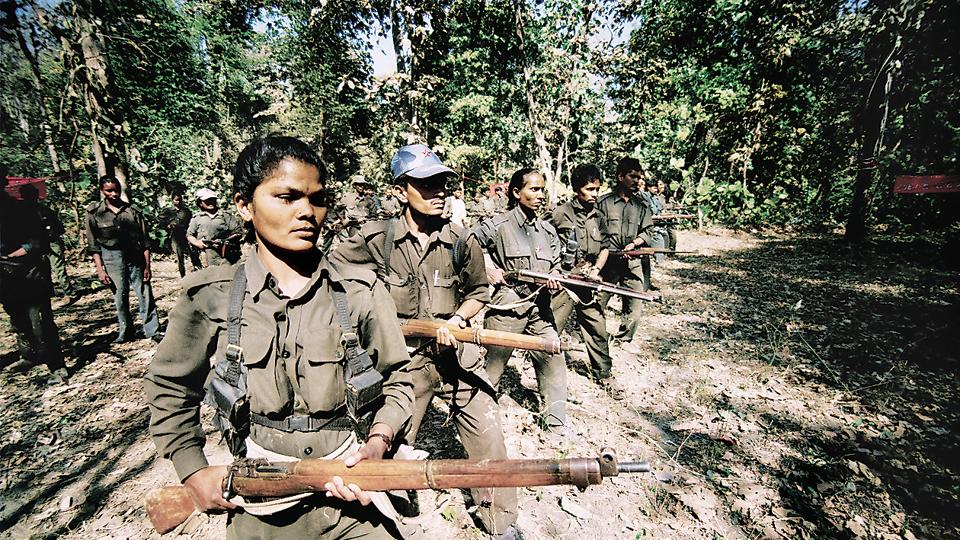In Nightmarch: A Journey into India’s Naxal Heartlands, Alpa Shah, an anthropologist and academic, embarks on a gripping and thought-provoking exploration of one of India’s most enduring conflicts. With a focus on the Naxalite insurgency, Shah ventures deep into the heart of the matter, seeking to comprehend the motivations and struggles of those entangled in this complex battle.
The book begins with Shah’s experiences living among the Adivasi communities in the forests of eastern India, known as the Red Corridor, which has been the hotbed of Naxalite activity for decades. She delves into the history and genesis of the Naxalite movement, tracing its origins back to the late 1960s and early 1970s, when it emerged as a radical left-wing response to the social and economic injustices faced by the marginalised and oppressed sections of society.
The book begins with Shah’s experiences living among the Adivasi communities in the forests of eastern India, known as the Red Corridor, which has been the hotbed of Naxalite activity for decades. She delves into the history and genesis of the Naxalite movement, tracing its origins back to the late 1960s and early 1970s, when it emerged as a radical left-wing response to the social and economic injustices faced by the marginalised and oppressed sections of society.
In 2010, Alpa Shah undertook a daring seven-night march, covering 250 kilometres through the Naxalite-affected areas. This arduous journey culminated in her remarkable book, providing insight into the secretive world of the Maoist movement. These regions, including Jharkhand, Chhattisgarh, Odisha, Andhra Pradesh, and Telangana, house substantial reserves of valuable resources such as coal, iron ore, bauxite, copper, manganese, and mica.

Alpa Shah embarked on her journey to Jharkhand during the tumultuous times of Operation Green Hunt, a government initiative aimed at rooting out guerrilla fighters. Despite the daunting challenges posed by the remote and isolated nature of tribal communities in the region, she fearlessly immersed herself in their midst. Embracing the methodology of participant observation, inspired by the renowned anthropologist Bronislaw Malinowski, Shah actively engaged with the community, leaving no stone unturned to understand their intricate motivations, dilemmas, and conflicts, particularly among the Naxal leaders. Her hands-on approach proved invaluable in unravelling the deeper layers of this complex landscape.
Through the author’s interactions with the people living in the conflict-affected areas, the book humanises those often marginalised by the mainstream media. It highlights the struggles, aspirations, and resilience of the individuals caught in the midst of violence, fostering empathy and understanding among readers.
Shah delves into the process of how the Naxals established their presence in new villages, their financial sources, and how they utilised the funds. Moreover, she explores the intricate relationship between the Naxals and the Adivasi community, shedding light on the dynamics between them.
Interspersed within the book are vivid portrayals of life among the Naxals, alongside thorough explanations of their inner workings. Shah delves into the process of how the Naxals established their presence in new villages, their financial sources, and how they utilised the funds. Moreover, she explores the intricate relationship between the Naxals and the Adivasi community, shedding light on the dynamics between them.

One particularly captivating revelation from Shah’s research is the reason behind the Adivasis’ affinity towards the Maoists. It was the ‘ideology of egalitarianism’, coupled with their genuine respect for the people’s customs and traditions, that endeared the Naxalites to the community. By observing simple yet profound gestures like removing footwear before entering a home, sitting on the floor, and sharing food and drink, the Naxals cultivated trust and respect among the Adivasis.
Community and development In Nightmarch: A journey into India’s Naxal heartlands
At its core, Nightmarch: A Journey into India’s Naxal Heartlands explores the complex interplay between economic development and the well-being of indigenous communities. It highlights the conflict-ridden landscape where corporations prioritise profits over the environment and the livelihoods of Adivasis. Simultaneously, Naxal leaders strive to rally these displaced communities to their cause. Throughout the book, Alpha Shah unflinchingly depicts the human rights violations and state-sponsored violence prevalent in the Naxal-affected regions.
The narrative includes poignant accounts of innocent civilians caught in the crossfire between the Naxalites and government forces. The book serves as a poignant wake-up call, demanding greater attention to the rights and dignity of those living amidst the conflict, while shedding light on the urgency of addressing extrajudicial killings and police brutality.
Alpha Shah delves into the intricate dilemmas faced by the Naxal revolutionaries in Nightmarch: A Journey into India’s Naxal Heartlands. Amid their pursuit of radical change, they encounter internal contradictions and challenges. One such predicament lies in the delicate balance between their commitment to the cause and their connections to family and kin, which have at times led to betrayals from within their own ranks.
In the concluding chapter, Shah delves into the internal inequalities within the Naxal ranks. She argues that despite the movement’s claims of fighting for the oppressed, it is led predominantly by upper-caste men, neglecting the nurturing and empowerment of lower-caste and Adivasi women leaders. This failure to address the gender and caste imbalances weakens their ideological stance and raises questions about the true nature of their commitment to equality.
Furthermore, the Naxals find themselves ideologically at odds with capitalism, while paradoxically recognising the need for capital to fund large-scale revolutions. This incongruity highlights the complexities of their struggle and the pragmatic compromises they must make to sustain their movement. Moreover, the Naxals’ approach of violent resistance often invites severe state oppression, creating a cycle of brutality that perpetuates the conflict. The state’s use of force further fuels the Naxals’ sense of injustice and reinforces their commitment to their cause.
In the concluding chapter, Shah delves into the internal inequalities within the Naxal ranks. She argues that despite the movement’s claims of fighting for the oppressed, it is led predominantly by upper-caste men, neglecting the nurturing and empowerment of lower-caste and Adivasi women leaders. This failure to address the gender and caste imbalances weakens their ideological stance and raises questions about the true nature of their commitment to equality.

Shah’s writing style is accessible and profound, making Nightmarch suitable for academic readers and general audiences interested in understanding the complexities of the Naxalite movement. Through her lucid prose, she paints vivid images of the landscapes and communities she encounters, allowing readers to visualise the scenarios and emotions vividly.
The book Nightmarch: A Journey into India’s Naxal Heartlands is a compelling and essential read for anyone seeking a deeper understanding of Naxalism and its impact on the Adivasi community. It gives readers a rare glimpse into a largely hidden and misunderstood world, shedding light on the underlying issues driving the Naxalite insurgency. It is a must-read for anyone interested in understanding the socio-political complexities of India’s heartland and the struggle for social justice that continues to unfold there.
About the author(s)
Aamir Raza is a dedicated researcher based in New Delhi, India. He holds a Master's degree in Political Science from Jamia Millia Islamia University, New Delhi. He has been previously associated with Lokniti-CSDS and the Institute of Perception Studies as a Researcher. His areas of research interest include Electoral politics, representation, minority studies, ethnic politics and democratisation.





